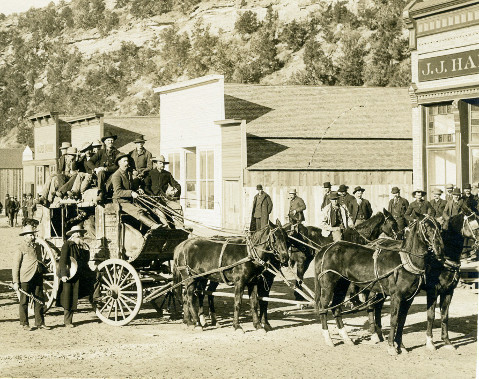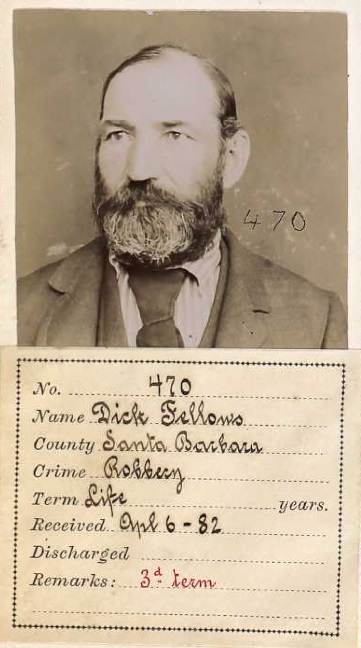The Bandit Dick Fellows
Daring and Ineptitude Marked His Career

In his 14-year career as stagecoach robber and horse thief, Dick Fellows displayed both tremendous daring and shocking ineptitude. His story of triumphs and travails made him a household name throughout California.
He was born George Brittain Lyttle in Kentucky in the mid-1840s. He studied law for a time but succumbed to alcoholism and made his way to California in the late 1860s where he took the name Dick Fellows.

He went into hog farming outside Los Angeles, but money problems pushed him into crime. He pulled off a number of successful stagecoach robberies until tracked down and, in January 1870, sent to San Quentin prison. He was a model prisoner, working in the library and teaching Sunday school. Authorities pardoned him in the spring of 1874; he had served less than half his sentence.
He was soon up to his old tricks. By November 1875, he was living in Caliente in Kern County. First he attempted, and failed, to rob a Wells Fargo shipment of $240,000 in gold. Undeterred, he then robbed the northbound stage, making off with the strongbox. Unfortunately, he had no way to open the box, and when he attempted to load it on his horse, the beast bolted. Now on foot, carrying the heavy box, he lost his footing, fell, and broke his leg. Still he trudged on, eventually coming upon a Chinese laborers’ camp, where he opened the box: the take, $1,800.

He then stole a horse to make his getaway. Unbeknownst to him, however, the horse had been newly shod, which made horse and rider quite easy to track. Fellows was captured near Bakersfield, made a successful jail break, only to be recaptured. He was soon on his way back to San Quentin to serve an eight-year sentence.
Again, he was the model of good behavior, writing a series of letters from his cell swearing to live an honest life and, should he ever steal again, to take only from “affluent corporations.” Released in July 1881, he soon robbed a stage in San Luis Obispo County. A foiled robbery attempt near Los Alamos was followed a few days later with a success in which Fellows made off with the cash and the driver’s gold watch. This was his downfall; he was soon caught near San Jose with the watch in his possession. Once again he managed to escape before being secured once and for all.
Returned to Santa Barbara, he was convicted in March 1882. Three days after sentencing, he attacked the deputy sheriff and wrestled his gun from him. Jumping aboard a horse, he headed for the foothills, only to be bucked off only a few blocks later. He was quickly surrounded by armed citizens. After returning the pistol, he, in the words of one newspaper, “lit a cigarette and lounged back to jail … as cool as a cucumber on ice.”
This brought an end to the criminal career of Dick Fellows. Eventually released from prison, he visited Santa Barbara one last time, in 1915. After that, Dick Fellows disappeared, and his ultimate whereabouts remain a mystery to this day.
Michael Redmon, director of research at the Santa Barbara Historical Museum, will answer your questions about Santa Barbara’s history. Write him c/o The Santa Barbara Independent, 122 West Figueroa Street, Santa Barbara, CA 93101.



